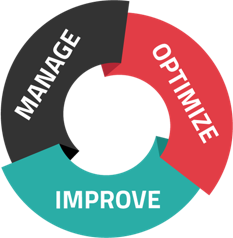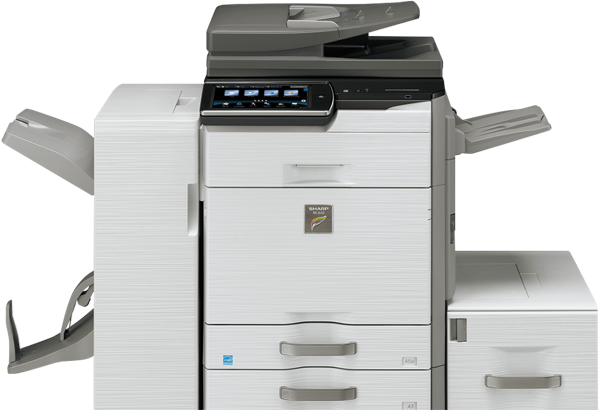
Whether you're looking at document management for the first time or you want to take your current system to the next level, you've probably wondered about cloud storage. What do tools like Google Drive and Dropbox have to add to the document management conversation? Are they better than traditional systems? Let's find out!
A Closer Look at Document Management
Every business has documents, whether they're digital or physical. That means just about every business can benefit from document management. However, with Google Docs and Dropbox offering so many document-related features, some companies start to wonder what "document management" really means and if these tools can get the job done.
Let's take a closer look at each option to understand the difference:
Document Management
A document management system isn't just about storage. It's about creating a shared digital workspace where documents can be created, updated, shared, secured, and controlled in all the right ways. Check out these examples:
- Bridging the gap: A powerful document management solution bridges the gap between physical and digital data, helping you scan physical files and organize or store them based on techniques that work best for your business. This allows you to transition to a paperless workflow or even just cut back on printing costs.
- Integrating with apps: A good document management system can be integrated with all your favorite workflow and efficiency apps. It brings other tools together to help improve visibility and collaboration.
- Automating your workflow: In many cases, document management helps automate manual tasks in your physical and digital workflows. That means your teams save time and your work gets done without the risk of human error.
- Keeping you compliant: Document management systems have a variety of security tools and built-in solutions that enable you to comply with regulations such as HIPAA.
Cloud Apps
Cloud tools, most notably Google Drive and Dropbox, are becoming ever more popular because they offer all kinds of features and functions. For example, Google Drive includes access to Google Docs, allowing users to create and collaborate on documents in a shared space.
It's true that these cloud tools provide many similar solutions, which means that, at first glance, some companies may think they're a valid replacement for a full document management system. However, upon closer inspection, it's clear that these tools--while helpful--don't check the same boxes. Here are a few examples:
- Physical vs. digital data: Cloud tools aren't necessarily designed to bridge the gap between data types. While a traditional document management system helps you create organizational structures that apply to paper files and digital files alike, these cloud tools are just that: mostly limited to the cloud.
- App lockdown: In many ways, cloud tools "lock you down" because they want you to use a certain suite of apps. For example, Google Drive offers Google Docs, but isn't smoothly compatible with Word or other word processing applications. That means you lose some of your existing functionality and can't achieve full document management.
- Manual tasks: While cloud tools are great for boosting efficiency, they're not necessarily automation tools. For the most part, your manual tasks--such as data capture or invoice creation--are likely to stay manual.
- Noncompliance: These cloud tools don't always check the necessary boxes for data security and privacy regulations. That's just one more reason they don't fully live up to the "document management" name.
A Smarter Document Management Solution
The good news is that, while traditional systems clearly have the edge when it comes to document management, there's no reason to say goodbye to the cloud. In fact, a good document management system will include solutions such as cloud storage and backups, which essentially means you're getting the best of both worlds. In some cases, you may even be able to integrate your traditional system with Google Drive or Dropbox to keep your workflows running as smoothly as possible.
The key is to choose a document management system that can be adapted to fit your needs--whatever those may look like. If the cloud is what you need, don't settle for a solution that limits your reach; instead, remember that document management is supposed to make things easier for your business (not more difficult).
Conclusion
Traditional document management is the best option for many businesses, as most need a robust option that both scales and fits their workflow and storage needs.
However, although traditional document management is the only "real" document management, that doesn't mean cloud tools should be shoved aside. In fact, both have their place--you just need to know how to make them work together.
Want a document management system that provides the best of both worlds? Contact us today to get started!



